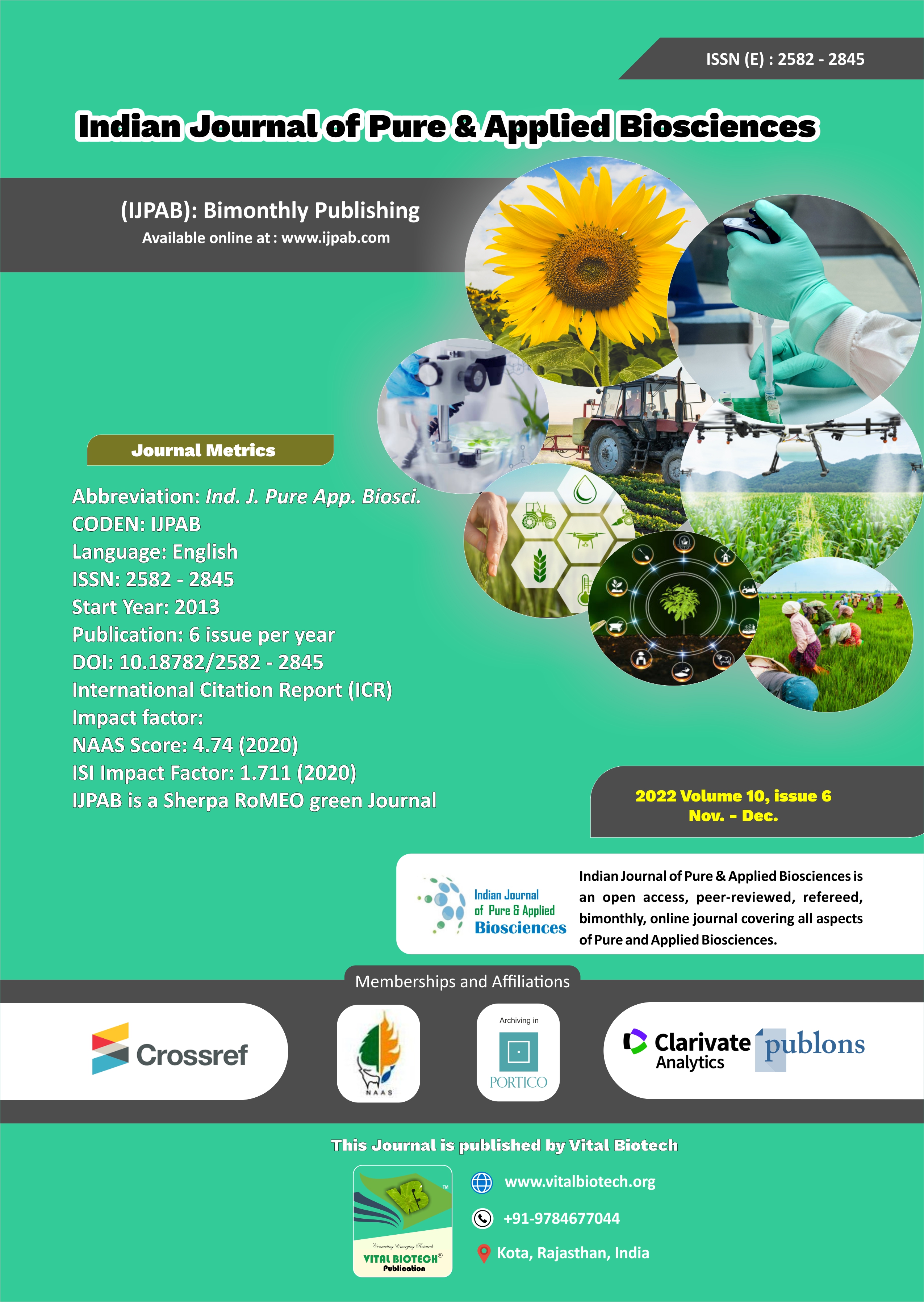-
No. 772, Basant Vihar, Kota
Rajasthan-324009 India
-
Call Us On
+91 9784677044
-
Mail Us @
editor@ijpab.com
Indian Journal of Pure & Applied Biosciences (IJPAB)
Year : 2022, Volume : 10, Issue : 6
First page : (23) Last page : (30)
Article doi: : http://dx.doi.org/10.18782/2582-2845.8953
Rapid Classification of Rice Varieties using (ATIR-FTIR) Spectroscopy and Multivariate Chemometrics
Josephine Ukomadu* ![]() , John Tetteh and Mustapha Gani
, John Tetteh and Mustapha Gani
Department of Plant Science and Biotechnology, University of Port Harcourt Choba, Nigeria
*Corresponding Author E-mail: mysossyuko@gmail.com
Received: 13.09.2022 | Revised: 27.10.2022 | Accepted: 10.11.2022
ABSTRACT
Rice is one of the most commonly consumed cereal crops in the world. Rice varieties are difficult to identify, especially when different varieties of rice are mixed (cheap varieties mixed with expensive ones) and packaged for consumers to purchase.Quality control is of great concern in the food industry in that food productsare sorted and graded distinctly depending on the quality parameters after harvest. Fourier Transformed Infrared-Attenuated Total Reflectance (FTIR-ATR) Spectroscopy and multivariate chemometrics were applied to classify four rice varieties bought from local shops in the UK for this study. A total of 80 samples were analyzed using Principal component analysis and hierarchical cluster analysis. This method was developed with the aim of Classifying rice varieties as fast as possible without sample alteration. The spectral profile of the rice varieties was obtained at a wave number range of 4000-450 cm-1. Result shows that FTIR-ATR spectroscopy could be used successfully to discriminate rice varieties. When PCA and HCA were used to analyze the spectra data, cluster were identified with few samples of the rice varieties mixed up in the four different clusters identified. Based on this analysis, a suggestion was therefore made that parameters used for this study were not sensitive enough to produce the required outcome and since rice varieties have the same component, this makes it difficult to discriminate them. Although FTIR-ATR has not been widely applied in the discrimination of rice varieties. Multivariate statistical analysis has been successful. The findings of this study therefore pave the way for further research.
Keywords: Cereals, Rice, Oryza sativa, Crops.
Full Text : PDF; Journal doi : http://dx.doi.org/10.18782
Cite this article: Ukomadu, J., Tetteh, J., & Gani, M. (2022). Rapid Classification of Rice Varieties using (ATIR-FTIR) Spectroscopy and Multivariate Chemometrics, Ind. J. Pure App. Biosci. 10(6), 23-30. doi: http://dx.doi.org/10.18782/2582-2845.8953


